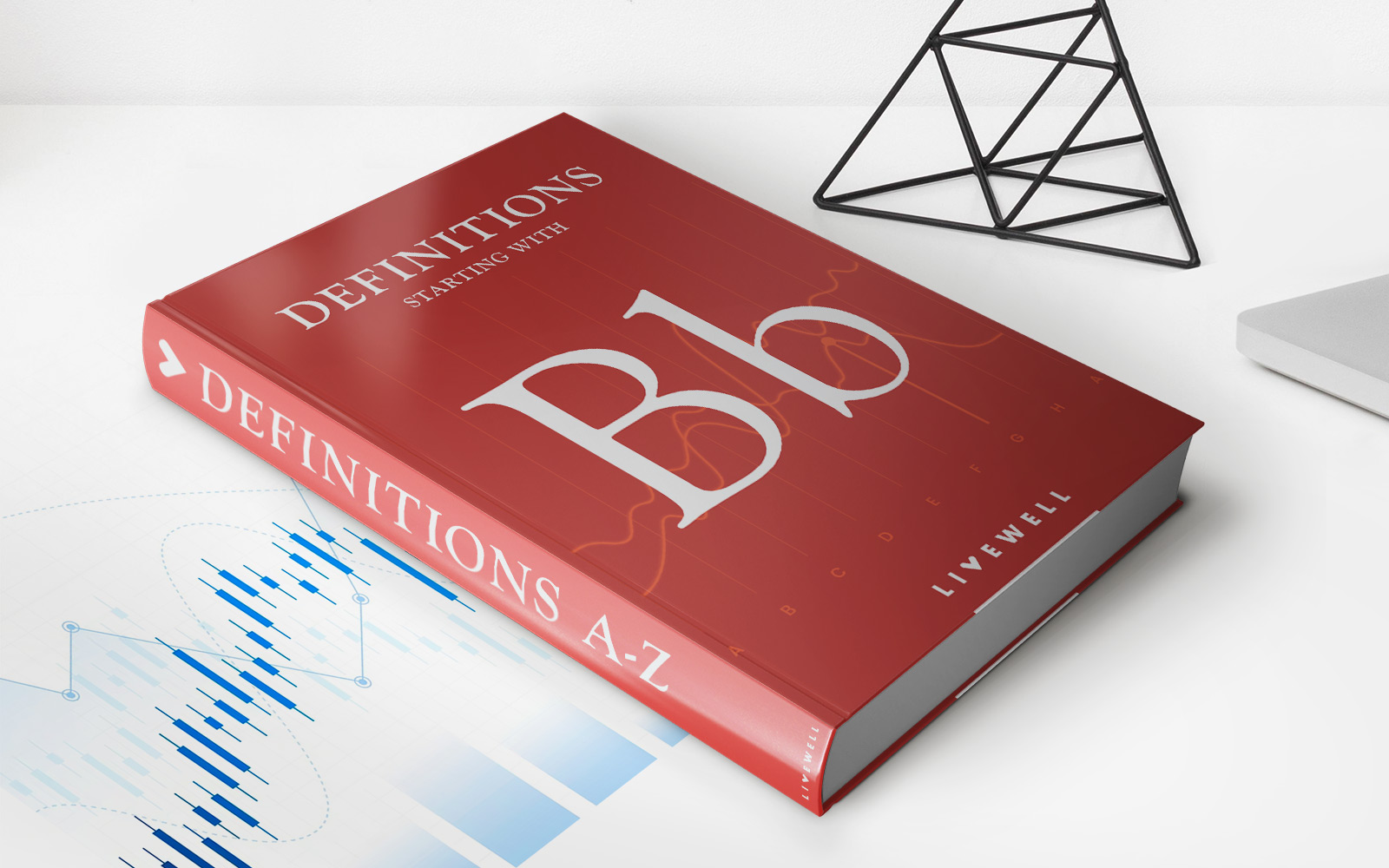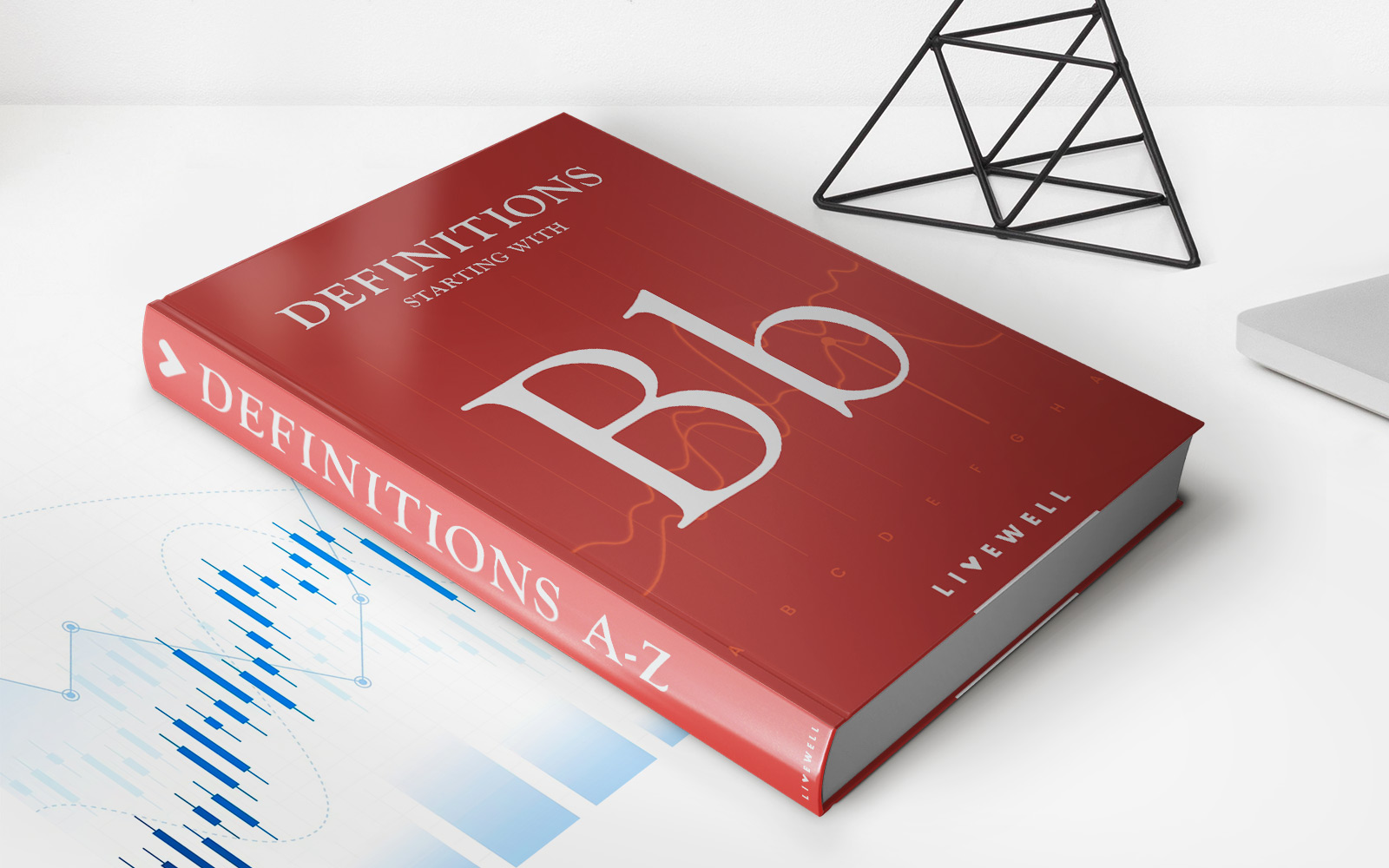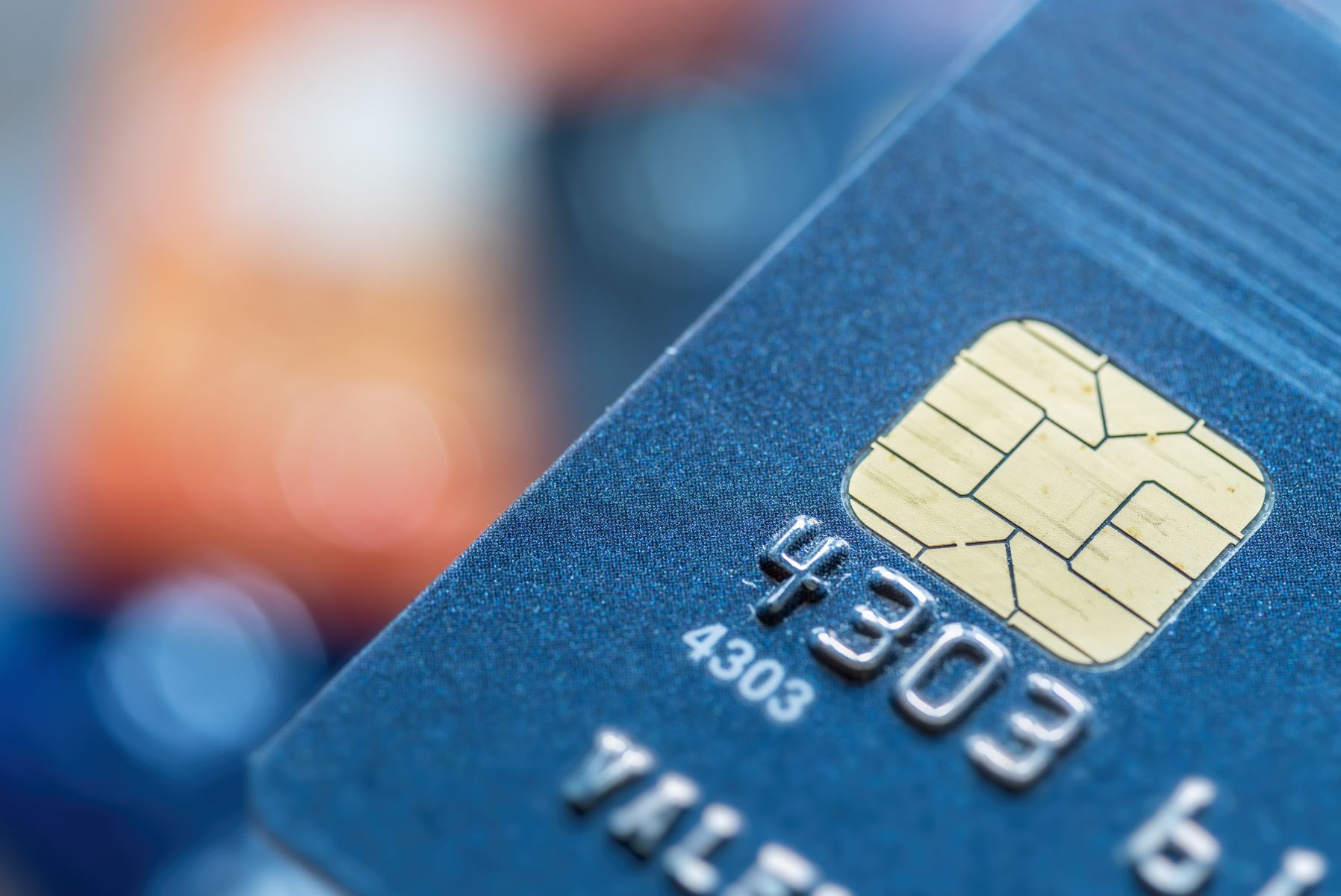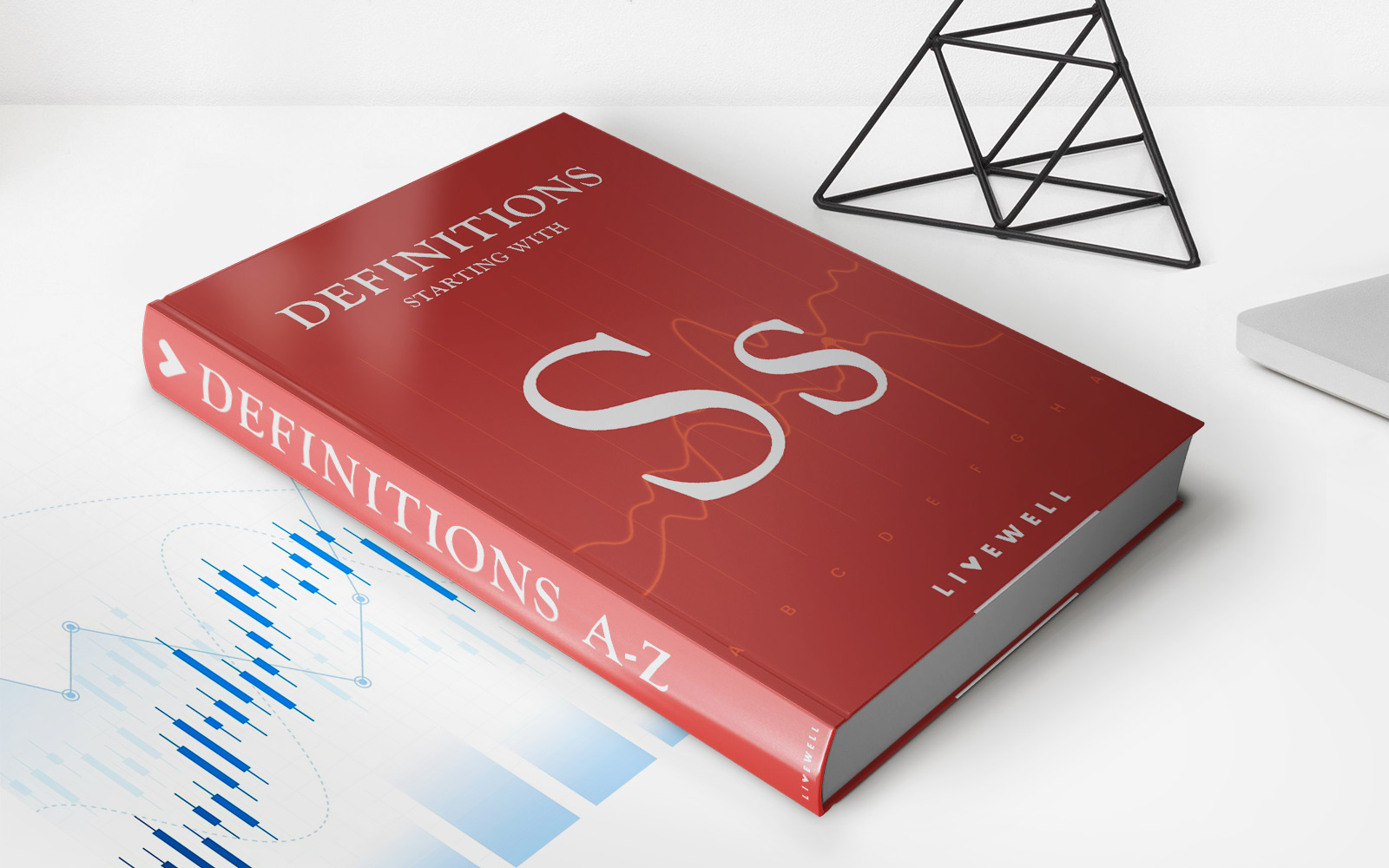Home>Finance>How Does Recoverable Depreciation Work On An Insurance Claim?


Finance
How Does Recoverable Depreciation Work On An Insurance Claim?
Published: November 19, 2023
Learn how recoverable depreciation works on an insurance claim and understand its financial implications. Gain insights into the finance aspect of insurance settlements.
(Many of the links in this article redirect to a specific reviewed product. Your purchase of these products through affiliate links helps to generate commission for LiveWell, at no extra cost. Learn more)
Table of Contents
- Introduction
- Understanding Depreciation
- What is Recoverable Depreciation?
- The Role of Insurance in Recoverable Depreciation
- Steps to File an Insurance Claim with Recoverable Depreciation
- Evaluation and Calculation of Depreciation
- Factors Influencing Recoverable Depreciation Amount
- Claims Settlement Process
- Negotiating with the Insurance Company
- Benefits and Limitations of Recoverable Depreciation
- Conclusion
Introduction
Insurance can be a lifesaver in times of unexpected events or accidents that result in damage to property. Whether it’s a natural disaster, fire, or theft, having insurance coverage provides financial protection and peace of mind. However, when it comes to filing an insurance claim, there are various factors to consider, including the concept of depreciation.
Depreciation is the decrease in the value of an asset over time due to wear and tear, age, or obsolescence. It is an essential component that insurance companies take into account when determining the payout for a damaged or lost item. While some depreciation is inevitable, policyholders may be relieved to know that there is a concept called “recoverable depreciation,” which can help them receive a higher settlement amount for their insurance claim.
In this article, we will delve into the world of recoverable depreciation and understand how it works on an insurance claim. From the definition of depreciation to the steps involved in filing a claim, we will explore the nuances of this process. Additionally, we will discuss the factors that influence the recoverable depreciation amount, the claims settlement process, and the benefits and limitations of this concept.
So, if you are curious about how to maximize your insurance claim and ensure that you receive adequate compensation for your loss, read on to unravel the intricacies of recoverable depreciation.
Understanding Depreciation
Before diving into the concept of recoverable depreciation, it is crucial to have a solid understanding of depreciation itself. Depreciation refers to the decline in value of an asset over time due to various factors such as wear and tear, age, or technological advancements. It is a natural and unavoidable part of owning any property or item.
When it comes to insurance claims, depreciation plays a significant role in determining the payout amount. Insurance companies take into account the depreciated value of the damaged or lost item when calculating the settlement. This means that policyholders may not receive the full replacement cost of the item but rather the reduced value due to depreciation.
Depreciation can affect various types of assets, including buildings, vehicles, electronics, and furniture. Each asset depreciates at a different rate based on factors such as its useful life and market value. For example, a computer may have a useful life of five years, while a vehicle may have a useful life of ten years.
Depreciation can be calculated using different methods, such as the straight-line method or the declining balance method. The chosen method depends on the type of asset and the industry standards. The depreciation amount is typically spread over the asset’s useful life, resulting in a gradual decrease in value over time.
Understanding depreciation is essential because it sets the foundation for comprehending recoverable depreciation. It helps policyholders recognize that the payout they receive may not cover the full cost of replacing a damaged or lost item. This is where recoverable depreciation comes into play, providing an opportunity for policyholders to bridge the gap between the depreciated value and the replacement cost.
What is Recoverable Depreciation?
Recoverable depreciation is a term used in the insurance industry to describe the portion of depreciation that can be recovered or reimbursed by the policyholder. It is a way for policyholders to receive additional compensation to cover the difference between the depreciated value of an asset and its actual replacement cost.
When an insurance claim is filed, the insurance company typically calculates the settlement amount based on the depreciated value of the damaged or lost item. However, this amount may not be sufficient to fully replace the item with a brand new one at current market prices. This is where recoverable depreciation comes into play.
Recoverable depreciation allows policyholders to claim the remaining value of their asset after deducting the depreciation. For example, if a policyholder’s laptop was damaged in a fire and its depreciated value is estimated at $500, but the cost of a brand new laptop with similar specifications is $1,000, the recoverable depreciation would be $500.
It’s important to note that recoverable depreciation is not automatically included in every insurance policy. Some policies may include it as a standard feature, while others may require policyholders to add it as an endorsement or rider to their existing policy. It is crucial to thoroughly review your insurance policy to determine if recoverable depreciation is included or if it can be added for additional coverage.
Recoverable depreciation can be particularly beneficial for policyholders who want to ensure that they are adequately compensated for their loss and can afford to replace their damaged or lost items with new ones. By recovering a portion of the depreciation, policyholders can bridge the gap between the depreciated value and the actual replacement cost.
It’s important to keep in mind that the process of recovering depreciation may involve certain conditions and requirements set by the insurance company. These conditions may include providing proof of replacement cost, submitting invoices or receipts, or working with approved vendors or suppliers.
Now that we have a clear understanding of recoverable depreciation, let’s explore the role of insurance in the recoverable depreciation process.
The Role of Insurance in Recoverable Depreciation
Insurance plays a crucial role in the concept of recoverable depreciation. It provides the framework and financial support for policyholders to recover a portion of the depreciation when filing an insurance claim. Without insurance coverage, policyholders would be solely responsible for covering the entire cost of replacing a damaged or lost item.
When an insured event occurs, such as a fire, flood, or theft, the policyholder needs to report the incident to their insurance company and initiate the claims process. The insurance company will then assess the damage or loss and calculate the settlement amount. This process involves considering the depreciated value of the item based on its age, condition, and useful life.
Insurance companies use various methods to determine the depreciation of an asset. They may rely on industry standards, market values, or the guidance of professional appraisers. The depreciated value is subtracted from the item’s replacement cost to calculate the initial settlement amount.
However, with recoverable depreciation, policyholders have the opportunity to receive additional compensation to bridge the gap between the depreciated value and the actual replacement cost. This is especially crucial when the cost of replacing the damaged or lost item is significantly higher than its depreciated value.
Insurance policies that include recoverable depreciation provisions often outline the process and requirements for policyholders to qualify for reimbursement. These requirements may include providing proof of replacement cost, submitting estimates or invoices from vendors or suppliers, or working with approved contractors to repair or replace the item.
It’s important for policyholders to review their insurance policy carefully to understand the terms and conditions of recoverable depreciation. This will help ensure that they meet the necessary criteria to receive the additional compensation and avoid any potential claim disputes.
The role of insurance in recoverable depreciation extends beyond just providing financial assistance. It also offers peace of mind by protecting policyholders against unexpected events and ensuring they are appropriately compensated for their loss. By understanding their insurance coverage and the recoverable depreciation process, policyholders can navigate the claims process more effectively and receive the maximum reimbursement to help them get back on their feet.
Next, let’s explore the steps involved in filing an insurance claim with recoverable depreciation.
Steps to File an Insurance Claim with Recoverable Depreciation
Filing an insurance claim with recoverable depreciation requires careful attention to detail and adherence to the specific steps outlined by your insurance company. To ensure a smooth and successful claims process, follow these essential steps:
- Report the incident: Contact your insurance company as soon as possible to report the damage, loss, or incident that requires filing a claim. Provide them with all the necessary details, including the date, time, and location of the incident, as well as any relevant documentation or evidence.
- Review your policy: Thoroughly review your insurance policy to understand the coverage and provisions related to recoverable depreciation. Familiarize yourself with any requirements or conditions that need to be met to qualify for reimbursement.
- Document the damage or loss: Take photographs or videos of the damaged area or item, if possible. This visual evidence will help support your claim and provide documentation of the extent of the damage.
- Gather evidence of the item’s value: Collect any receipts, invoices, or appraisals that prove the original value of the item and its current replacement cost. This documentation will assist in calculating the recoverable depreciation amount.
- Obtain repair or replacement estimates: If the damaged item can be repaired, obtain estimates from approved contractors or vendors. If it needs to be replaced, gather quotes for the cost of a comparable new item. These estimates will be used to determine the recoverable depreciation amount.
- Submit the claim: Complete the necessary claim forms provided by your insurance company. Include all relevant documentation, such as photographs, receipts, estimates, and any other evidence requested. Make sure to accurately and comprehensively fill out the forms to expedite the processing of your claim.
- Cooperate with the claims adjuster: Expect a visit from a claims adjuster, who will assess the damage, confirm the validity of your claim, and investigate the circumstances. Cooperate fully with the adjuster, providing any additional information or evidence they may require.
- Negotiate the claim settlement: Work with your insurance company to negotiate the final claim settlement. Provide any additional documentation or information requested and be prepared to discuss and justify your requested recoverable depreciation amount. Negotiations may involve back-and-forth discussions to reach a mutually agreeable settlement.
- Receive the settlement: Once an agreement is reached, you will receive your claim settlement, which will include the recoverable depreciation amount. This reimbursement can be used to replace or repair the damaged or lost item.
Following these steps will help streamline the claims process and increase the chances of a successful outcome. Working closely with your insurance company and providing prompt and accurate information will facilitate the timely resolution of your claim.
Now that we have covered the steps to file an insurance claim with recoverable depreciation, let’s explore how the evaluation and calculation of depreciation impact the overall process.
Evaluation and Calculation of Depreciation
When filing an insurance claim with recoverable depreciation, the evaluation and calculation of depreciation are crucial steps in determining the final settlement amount. Insurance companies employ various methods to assess and quantify the depreciation value of a damaged or lost item. Understanding how depreciation is evaluated and calculated can help policyholders navigate the claims process more effectively.
The evaluation of depreciation involves assessing the age, condition, and useful life of the item. Insurance adjusters may consider factors such as wear and tear, market value, and technological advancements. They may also consult industry standards and expert opinions to determine the appropriate depreciation rate for the particular asset.
Once the depreciation value has been evaluated, the calculation process begins. Insurance companies typically use depreciation formulas or tables provided by industry sources to calculate the depreciated value of the item. Common methods include the straight-line method, which spreads the depreciation evenly over the item’s useful life, and the declining balance method, which front-loads the depreciation in the earlier years.
The calculated depreciated value is then subtracted from the item’s original cost or replacement cost to determine the initial settlement amount. This initial amount may not account for the recoverable depreciation, which is the additional compensation that policyholders can claim to bridge the gap between the depreciated value and the actual replacement cost.
It’s important to note that recoverable depreciation is typically based on the replacement cost, not the original cost of the item. Insurance companies aim to pay policyholders an amount that enables them to replace the damaged or lost item with a similar new item at current market prices.
The calculation of recoverable depreciation considers the age and condition of the item at the time of the incident as well as the estimated replacement cost. The insurance company may require policyholders to provide estimates or invoices from vendors or suppliers to justify the requested recoverable depreciation amount.
Policyholders should be aware that the evaluation and calculation of depreciation can vary among insurance companies. Different policies may have different approaches to assessing depreciation, and it is important to thoroughly review your policy to understand the methodology and formulas used by your insurance company.
By understanding how depreciation is evaluated and calculated, policyholders can better navigate the claims process and provide the necessary documentation and information to support their claim. This knowledge allows policyholders to advocate for themselves and ensure they receive the maximum reimbursement to replace their damaged or lost items.
Next, we will explore the factors that influence the recoverable depreciation amount in an insurance claim.
Factors Influencing Recoverable Depreciation Amount
When it comes to determining the recoverable depreciation amount in an insurance claim, several factors come into play. These factors can vary depending on the insurance company’s policies and the specific circumstances of the claim. Understanding these factors can help policyholders navigate the claims process and have a clearer picture of the potential reimbursement they may receive.
Age of the Asset: The age of the damaged or lost asset is a crucial factor in determining the recoverable depreciation amount. Generally, as an asset gets older, its value depreciates at a higher rate. Insurance companies consider the age of the item to estimate the percentage of depreciation to be applied. For example, a five-year-old item may have a higher depreciation percentage compared to a one-year-old item.
Condition at the Time of Loss: The condition of the asset at the time of the incident is another determining factor. If the item was well-maintained and in good condition, it may have a lower depreciation percentage compared to an item in poor condition. Insurance adjusters may conduct inspections or rely on photographs and evidence provided by the policyholder to assess the condition of the asset.
Useful Life: The expected useful life of the asset is also considered. Assets have a finite lifespan, after which their value decreases significantly due to wear and tear or technological advancements. Insurance companies may use industry standards or expert opinions to estimate the remaining useful life of the asset and factor it into the calculation of depreciation.
Market Value: The market value of the asset plays a role in determining the recoverable depreciation amount. If the market value of the item decreases due to factors such as obsolescence or changes in demand, the depreciation percentage may be higher. Conversely, if the market value remains stable or increases, the depreciation percentage may be lower.
Replacement Cost: The cost of replacing the damaged or lost item is a crucial factor in determining the recoverable depreciation amount. Insurance companies aim to reimburse policyholders an amount that enables them to obtain a new, similar item at current market prices. The difference between the depreciated value and the replacement cost is the recoverable depreciation amount.
Policy Coverage: The terms and conditions of the insurance policy itself can influence the recoverable depreciation amount. Some policies may have limitations or restrictions on certain types of assets, such as electronics or jewelry. It is important to review the policy to understand how these limitations may impact the recoverable depreciation calculation.
It’s important for policyholders to provide accurate documentation and evidence when filing a claim, as this can greatly influence the recoverable depreciation amount. This may include invoices, receipts, appraisals, or repair estimates to support the replacement cost of the damaged or lost item.
By considering these factors and providing the necessary documentation, policyholders can increase their chances of receiving a fair and accurate recoverable depreciation amount. It is crucial to communicate openly with the insurance company and provide any requested information promptly throughout the claims process.
Next, we will explore the claims settlement process and how policyholders can negotiate with the insurance company to ensure a satisfactory outcome.
Claims Settlement Process
The claims settlement process is the final step in an insurance claim where the insurance company and the policyholder come to an agreement on the reimbursement amount. This process involves a thorough evaluation of the claim, negotiations, and the final settlement. Understanding the claims settlement process can help policyholders navigate the discussions with their insurance company and ensure a fair and satisfactory outcome.
Once the insurance company receives the claim, it assigns a claims adjuster to assess the damage or loss. The adjuster will review the documentation provided by the policyholder, conduct investigations, and determine the validity of the claim. They may visit the site of the incident, interview witnesses, and gather any additional evidence that supports or refutes the claim.
After evaluating the claim, the adjuster will calculate the initial settlement amount based on the applicable coverage, deductibles, and depreciation. This amount represents the depreciated value of the damaged or lost item. However, it does not include the recoverable depreciation, which is the additional compensation the policyholder can claim to bridge the gap between the depreciated value and the replacement cost.
Upon receiving the initial settlement offer, the policyholder has the opportunity to negotiate with the insurance company. This negotiation process involves presenting evidence, such as estimates, receipts, or appraisals, to support the replacement cost of the damaged or lost item. The policyholder can explain why they believe the recoverable depreciation amount should be higher based on the specific circumstances of their claim.
During the negotiation, it is essential for the policyholder to stay calm, organized, and persistent. They should clearly communicate their points and provide any additional documentation requested by the insurance company. It is beneficial to maintain a cooperative and professional attitude throughout the negotiation process.
The insurance company will also present its perspective during the negotiation, taking into account their assessment of the claim and considering factors such as policy limitations, exclusions, and the terms outlined in the insurance policy. The negotiation process may involve several rounds of discussion and back-and-forth communication until both parties reach a mutually agreeable settlement.
Once a settlement is reached, the insurance company will provide the final claim settlement amount, which includes the recoverable depreciation, if applicable. This amount is intended to aid the policyholder in repairing or replacing the damaged or lost item.
It is important to carefully review the settlement agreement before accepting it. Policyholders should ensure that the agreed-upon amount is sufficient to cover the costs of replacement or repair. If there are any concerns or discrepancies, it is crucial to address them with the insurance company.
The claims settlement process is a critical stage in the insurance claim process. By understanding and actively participating in this process, policyholders can work towards securing a fair and satisfactory settlement that enables them to recover from their loss.
Now, let’s explore how policyholders can effectively negotiate with the insurance company to ensure a favorable outcome.
Negotiating with the Insurance Company
When filing an insurance claim, policyholders have the right to negotiate with the insurance company to ensure a fair and satisfactory settlement. Negotiation is a crucial step in the claims process, as it allows policyholders to advocate for themselves and present evidence to support their case. By following these tips, policyholders can effectively negotiate with the insurance company and increase their chances of securing a favorable outcome:
- Gather supporting evidence: Collect all relevant documentation, such as estimates, receipts, and invoices, to demonstrate the true replacement or repair cost of the damaged or lost item. These documents are essential in supporting your argument during negotiations.
- Know your policy: Familiarize yourself with the terms and conditions of your insurance policy. Understand the coverage and limitations, as well as any provisions related to recoverable depreciation. This knowledge will help you make informed arguments during negotiations.
- Be prepared: Anticipate the questions and objections that the insurance company may raise. Prepare counterarguments with supporting evidence to address these concerns. Having a well-prepared case can strengthen your negotiations and increase the likelihood of a favorable outcome.
- Stay calm and professional: Keep emotions in check during negotiations. Remain calm, polite, and professional when communicating with the insurance company. Being considerate and composed can help maintain a constructive dialogue and improve the chances of reaching a mutually agreeable settlement.
- Document all communication: Keep a record of all communication with the insurance company, including phone calls, emails, and letters. Ensure that you document important details, such as the names of the representatives you speak with and the dates and times of the discussions. This documentation can serve as evidence and provide a reference for future discussions.
- Persist and follow up: Don’t be afraid to follow up with the insurance company if there are delays or unanswered questions. Being proactive and persistent in your communication shows your commitment to resolving the claim and can help move the negotiation process forward.
- Consider seeking professional help: If negotiations become challenging or reach a stalemate, you may consider seeking assistance from a public adjuster or an attorney who specializes in insurance claims. These professionals can provide guidance, expertise, and representation to ensure your interests are protected during negotiations.
- Review the settlement offer carefully: Once an agreement is reached, thoroughly review the settlement offer before accepting it. Ensure that it aligns with your expectations and the discussions that took place during negotiation. If there are any discrepancies or concerns, don’t hesitate to raise them and seek clarification from the insurance company.
- Know your rights: Familiarize yourself with your rights as a policyholder. Understand the grievance procedures, mediation services, or regulatory bodies that can help resolve disputes if negotiations reach an impasse. Knowing your rights can provide you with additional avenues to pursue a fair settlement.
Remember, negotiation is a collaborative process where both parties aim to find a mutually agreeable solution. By being prepared, professional, and persistent, policyholders can effectively negotiate with the insurance company and secure a settlement that fairly compensates them for their loss.
With the negotiation process covered, let’s now explore the benefits and limitations of recoverable depreciation in an insurance claim.
Benefits and Limitations of Recoverable Depreciation
Recoverable depreciation offers several benefits to policyholders when filing an insurance claim, but it is important to also be aware of its limitations. Understanding these pros and cons can help policyholders make informed decisions and manage their expectations during the claims process. Let’s explore the benefits and limitations of recoverable depreciation:
Benefits:
- Maximizing reimbursement: The primary benefit of recoverable depreciation is that it allows policyholders to receive additional compensation to bridge the gap between the depreciated value and the actual replacement cost of the damaged or lost item. This helps ensure that policyholders can afford to replace their belongings with new ones rather than settling for used or lesser-quality replacements.
- Financial protection: Recoverable depreciation provides policyholders with financial protection after experiencing a loss. It helps mitigate the impact of depreciation and enables policyholders to recover a significant portion of the value of their damaged or lost item.
- Peace of mind: Knowing that recoverable depreciation is available in their insurance policy can provide peace of mind to policyholders. They can have confidence that they will not be solely responsible for covering the full cost of replacing their belongings in the event of a covered loss.
- Fair compensation: Recoverable depreciation ensures that policyholders are fairly compensated for their loss. By considering the age, condition, and market value of the item, insurance companies aim to provide a settlement that allows policyholders to obtain a new item comparable to the one that was damaged or lost.
- Flexibility in replacement options: Recoverable depreciation gives policyholders the freedom to choose how they want to replace their damaged or lost belongings. Whether they decide to purchase the exact same item or opt for an upgraded model, the additional compensation from recoverable depreciation allows for flexibility in replacement options.
Limitations:
- Policy requirements: Not all insurance policies include recoverable depreciation as a standard feature. Policyholders may need to add it as an endorsement or rider to their policy, which could result in additional costs.
- Depreciation estimation: Determining the accurate amount of depreciation can be subjective and may vary depending on the approach used by insurance adjusters. Disagreements over the depreciation percentage or value can arise, leading to negotiation and potential delays in the claims process.
- Replacement cost documentation: Policyholders are typically required to provide evidence, such as estimates or invoices, to support the replacement cost of the damaged or lost item. Gathering this documentation can be time-consuming and may involve coordination with vendors or suppliers.
- Policy coverage limitations: Recoverable depreciation may have certain limitations or exclusions within the insurance policy. It is important to carefully review the policy to understand any restrictions on specific types of assets or situations.
- Negotiation and settlement: Successfully negotiating the recoverable depreciation amount can be challenging. Policyholders need to be prepared, proactive, and persistent during the negotiation process to ensure they receive a fair settlement that adequately compensates them.
Despite its limitations, recoverable depreciation provides significant benefits to policyholders by helping them receive a fair reimbursement for their loss. By understanding the advantages and limitations, policyholders can better navigate the claims process and manage their expectations.
Now, let’s conclude our exploration of recoverable depreciation.
Conclusion
The concept of recoverable depreciation plays a vital role in the insurance claim process, enabling policyholders to receive additional compensation to bridge the gap between the depreciated value and the actual replacement cost of a damaged or lost item. By understanding how depreciation is evaluated, calculated, and recovered, policyholders can navigate the claims process more effectively and secure a fair settlement.
Recoverable depreciation offers several benefits, including maximizing reimbursement, providing financial protection, and offering peace of mind to policyholders. It ensures fair compensation for the loss and provides flexibility in replacement options. However, it is important to be aware of its limitations, such as policy requirements, potential disputes over depreciation estimation, and the need to provide accurate documentation and negotiate with the insurance company for a favorable settlement.
When filing an insurance claim, policyholders should take proactive steps such as reporting the incident promptly, gathering supporting evidence, and thoroughly reviewing their insurance policy to understand the coverage and provisions related to recoverable depreciation. They should effectively communicate with the insurance company, persist during negotiations, and seek professional help if necessary.
Ultimately, by understanding the nuances of recoverable depreciation and actively participating in the claims process, policyholders can increase their chances of receiving a fair and satisfactory settlement. It is crucial to adhere to the steps, gather supporting evidence, and maintain a professional and cooperative attitude during communication with the insurance company.
In times of unexpected events or accidents, insurance coverage, including the concept of recoverable depreciation, provides the necessary financial protection and peace of mind. By leveraging the benefits and managing the limitations of recoverable depreciation, policyholders can recover their losses and move forward with confidence.
Remember to review your insurance policy, seek expert advice when needed, and approach negotiations with a well-prepared case. With these considerations in mind, policyholders can make the most of recoverable depreciation and ensure a satisfactory outcome when filing an insurance claim.














